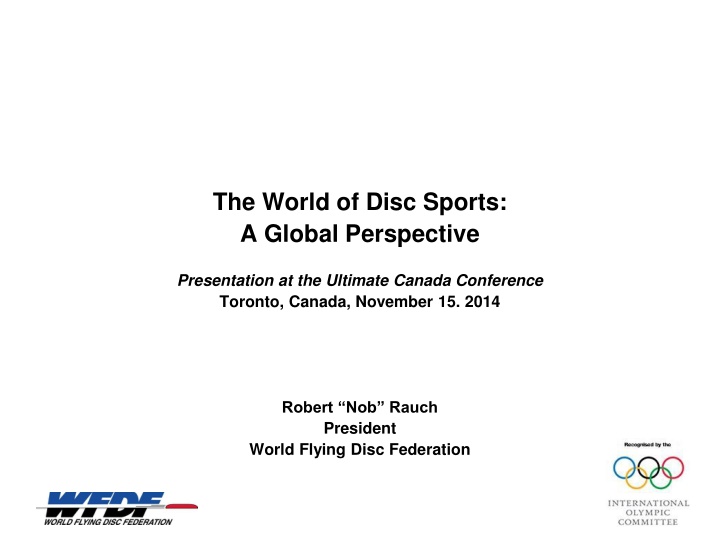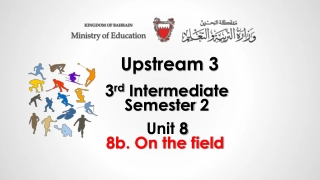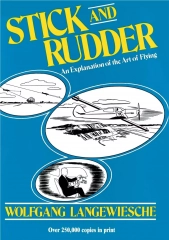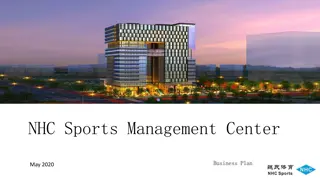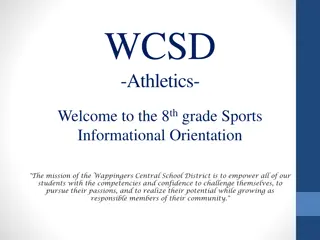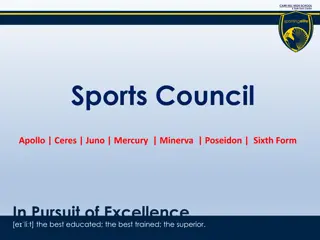The Evolution of Flying Disc Sports: A Global Perspective
Explore the fascinating history and development of flying disc sports, from the early days of Frisbee to the formation of the World Flying Disc Federation. Learn about key milestones, organizations, and the global impact of disc sports. Discover how these sports have evolved and gained recognition worldwide, including participation in events like the World Games and efforts towards Olympic recognition.
Download Presentation

Please find below an Image/Link to download the presentation.
The content on the website is provided AS IS for your information and personal use only. It may not be sold, licensed, or shared on other websites without obtaining consent from the author.If you encounter any issues during the download, it is possible that the publisher has removed the file from their server.
You are allowed to download the files provided on this website for personal or commercial use, subject to the condition that they are used lawfully. All files are the property of their respective owners.
The content on the website is provided AS IS for your information and personal use only. It may not be sold, licensed, or shared on other websites without obtaining consent from the author.
E N D
Presentation Transcript
The World of Disc Sports: A Global Perspective Presentation at the Ultimate Canada Conference Toronto, Canada, November 15. 2014 Robert Nob Rauch President World Flying Disc Federation
Overview of Presentation Flying Disc (aka Frisbee) sports were developed after the introduction of the first plastic flying discs in the 1950s by Fred Morrison, selling the rights to toy company Wham-O in 1957. The most popular Flying Disc sports were developed in the late 1950s through the 1970s. With the support of Wham-O, the International Frisbee Association (IFA) was started in 1967 to promote the sale of frisbees throughout North America and in Europe, Japan, and Australia. With the sale of Wham-O in 1982 and the cutback in the sports department, the World Flying Disc Federation was formed in 1985 to fill the void and to serve as a proper non-profit international sports governing body. Since then, WFDF has organized World Championships, codified the rules of the various disc disciplines, championed the spirit of the game, and promoted growth of frisbee sports globally. It has also pursued recognition and participation in the formal multi-sports organizations globally, becoming a part of the World Games program in 2001 and being granted recognition by the International Olympic Committee in May 2013. This short presentation will cover: Outline of disc sports activity globally The structure of WFDF WFDF s participation in the Olympic Movement Lessons to be shared between WFDF and Canadian Ultimate The World of Flying Disc Sports
Outline of disc sports activity globally The World of Flying Disc Sports
The Early History of Flying Disc In 1871, in the wake of the Civil War in the USA, William Russell Frisbie moved to Bridgeport, Connecticut. Hired to manage a new bakery, a branch of the Olds Baking Company of New Haven, he soon bought it outright and named it the Frisbie Pie Company. Under his direction the small company grew to as many as 80,000 pies per day until ceasing operation in1958. It is said that Yale students bought Frisbie's pies and tossed the tins around campus. The Flying Disc (aka Frisbee) made out of plastic was developed by Walter Frederick Morrison starting in 1948 and perfected as the Pluto Platter in 1951. Rich Knerr and A.K."Spud" Melin fresh out of the University of Southern California were making slingshots in their fledgling toy company called Wham-O when they first saw Morrison's discs whizzing around southern California beaches. They bought the rights and began producing their toy flying saucers in January 1957. The first Guts tournament was held in Escabana, Michigan, USA in 1958 and the name "Frisbee" was registered by Wham-O on May 1959. The World of Flying Disc Sports
The Early History of Flying Disc Edward "Steady Ed" Headrick, GM and marketing head of Wham-O, started the International Frisbee Association (IFA) in 1967 to promote the sale of their frisbees. Through the efforts of that organization and its general promotional efforts, many of the game designs and procedures were developed. The IFA organized the "Berkeley vs Southern California Meet, featuring Distance, Accuracy, Guts and Golf (the first known disc golf event). The meet was held in Brookside Park, in Pasadena, CA. Ultimate was developed in 1968 and Freestyle in 1974, and Disc Golf was formalized in 1976. Many of the international affiliates began as Wham-O distributorships that sponsored tours of well-known Frisbee athletes. Dan Stork Roddick, who took over as head of the sports marketing arm of Wham-O in 1975, played a crucial role in encouraging the establishment of national flying disc associations (FDAs) in Sweden, Japan, Australia, and in many of the countries of Western Europe, and was instrumental in supporting the establishment of specific disc discipline organizations such as the UPA, GPA, and FPA. The World of Flying Disc Sports
Global Participation in Disc Sports Today Nearly everyone in the developed world has probably thrown a frisbee in their life. Per the survey results provided in the 2013 Sports and Fitness Participation Report conducted annually by the Sports and Fitness Industry Association (SFIA), there were 5.1 million people that played Ultimate in the US in 2012. Core participants, defined as those playing 13 or more times per year, were estimated to be 1.48 million. This is similar to participation in gymnastics with 5.1 million total participants and 1.86 million core participants and track and field (4.3 million/2.44 million, respectively), and compares favorably to more established team sports in the US such as field hockey (1.2 million/0.66 million), lacrosse (1.6 million/0.82 million), beach volleyball (4.5 million/1.47 million), or rugby (0.89 million/0.36 million). Although there is no similar survey to the SFIA survey conducted on a world-wide basis, WFDF estimates that Ultimate and other flying disc sports are currently played by 7.5 million people world-wide, of which 2.2 million athletes play at least 12 times per year. The World of Flying Disc Sports
Structure of WFDF and its Activities The World of Flying Disc Sports
Background on WFDF: Overview The World Flying Disc Federation is the international sports federation responsible for world governance of flying disc (Frisbee) sports, including Ultimate, Beach Ultimate, Disc Golf, Freestyle, Guts, and Overall Events. WFDF is a federation currently composed of 62 member associations which represent flying disc sports and their athletes in 58 countries. WFDF is recognized by the International Olympic Committee (IOC) and the International Paralympic Committee (IPC), and it is a member of the Association of Recognised International Federations (ARISF). WFDF is a member of SportAccord and the International World Games Association (IWGA), It is also a signatory to the World Anti-Doping Agency Code. WFDF is a registered not-for-profit 501(c)(3) corporation in the state of Colorado, USA. The World of Flying Disc Sports
Background on WFDF: Mission Statement To advance all flying disc sports globally while protecting and promoting the spirit of the game. Purposes: The World Flying Disc Federation ("WFDF") seeks to: Serve as the international governing body of all flying disc sports, with responsibility for sanctioning world championship and other international flying disc events, establishing uniform rules, setting standards for and recording of world records, and representing them within the Olympic sports movement; Promote and protect the spirit of the game of flying disc sports play; Promote flying disc sports play throughout the world and foster the establishment of new national flying disc sports associations, advising them on all flying disc sports activities and general management; Promote and raise public awareness of and lobby for official recognition of flying disc play as sport; and Provide an international forum for discussion of all aspects of flying disc sports play. The World of Flying Disc Sports
Background on WFDF: History In 1983, Wham-O was sold to Kransco and the IFA was disbanded. WFDF s organizing Congress was held in Helsingborg Sweden in July 1985 where the first set of statutes was adopted and a board of directors was elected. The original written proposal submitted by Charlie Mead of the UK, who became the first WFDF President, outlined the general governance framework for the new International Federation. The organization was fairly loosely organized in its early years, primarily organizing World Championships, having an annual meeting (the Congress), and putting out an occasional newsletter to share information internationally. In 1992- 1994, under President Robert Nob Rauch, a new set of Bylaws was adopted, the federation was legally incorporated in the state of Colorado, USA and it obtained its 501(c)(3) not-for-profit status. The applications for membership in the International World Games Association (IWGA) and GAISF (now SportAccord) were submitted and subsequently approved in 1995. WFDF participated in the World Games for the first time in 2001, featuring both Ultimate and Disc Golf. The World of Flying Disc Sports
Background on WFDF: History (cont.) WFDF was recognized by the International Olympic Committee in May 2013 and by the International Paralympic Committee (IPC) in October 2014. WFDF is the global governing body for flying disc sports for the disciplines of Ultimate, Beach Ultimate, Disc Golf, Freestyle, Guts, Double Disc Court, and Field Events (e.g. Accuracy, Discathon, Distance, Maximum Time Aloft, Self Caught Flight). WFDF s Member associations reported that they had over 145,000 members in the 2014 annual census. The largest Member is USA Ultimate, followed by Ultimate Canada, Australia, Japan, and Great Britain. Of the total, 33% are women, and 89% of such members are 35 years of age or younger. The most significant growth today is being seen out of Latin America and Eastern Europe, as well as with juniors in the USA. The World of Flying Disc Sports
Background on WFDF: Members WFDF has 62 members in 58 countries. Member associations have over 145,000 active players. Africa Africa Dem. Republic of Congo South Africa Tanzania** Uganda Europe Europe Austria Belarus** Belgium BULA *** Croatia** Czech Republic Denmark Estonia Finland France Germany Great Britain Hungary Iceland Ireland Italy Latvia Lithuania** Luxembourg** Netherlands Norway Poland Portugal Russian Federation Europe (cont.) Europe (cont.) Slovakia Slovenia Spain Sweden Switzerland Turkey Ukraine Contacts Contacts Albania Azerbaijan Barbados Bermuda Bulgaria Chile Ecuador Egypt Georgia Jamaica Kazakhstan Kenya Morocco Mozambique Nigeria Peru Qatar Rwanda Serbia Thailand Turkmenistan Uruguay Vietnam Zimbabwe 50 359 100 228 2,272 205 80 621 954 850 97 140 50 1,008 4,000 50 437 444 59 569 2,696 3,632 3,621 234 310 362 654 404 Asia-Oceania Asia-Oceania Australia Chinese Taipei Hong Kong China India Indonesia** Israel Japan Malaysia** New Zealand People`s Republic of China Phillipines Singapore South Korea United Arab Republic 5,000 700 110 415 PanAmericas PanAmericas Argentina Brazil Canada Colombia Costa Rica** Dominican Republic FPA (Freestyle)* Mexico Panama PDGA (Disc Golf)* USA Ultimate USGPA (Guts) Venezuela 250 250 50 207 3,621 650 577 290 1,042 800 178 34,043 1,438 50 164 192 749 250 50 15 20,587 47,137 120 311 50 1,152 1,352 192 100 409 * Organizational Member ** Provisional Member TOTAL TOTAL 146,987 146,987 The World of Flying Disc Sports
Background on WFDF: Members WFDF Member Associations have been growing quite rapidly, doubling in active members and tripling in the last 10 years. In addition, there is active disc sport activity in over two dozen other countries today. Number of Athletes Represented by WFDF Number of Athletes Represented by WFDF s Member Associations s Member Associations The World of Flying Disc Sports
Relationship between WFDF and Members Associations WFDF is a federation of Member associations Our governance structure is organized in a matrix fashion: national boundaries and disc disciplines We allow for organizational memberships (e.g. FPA, PDGA), national memberships for one or more disciplines, and have both regular and provisional member ship categories Areas of non-conformance between WFDF and some Members On-field governance in Ultimate: self-governance vs. observers Rules: Converging, but there are still some differences The challenge of the variance in resources: WFDF vs our largest members Largest vs smallest members Members with a poor/non-existent revenue model WFDF hopes to learn from our own experience in working with the IOC how better to encourage best practices and to support the establishment of appropriate level of institutionalization of our member associations The World of Flying Disc Sports
Background on WFDF: World Championships WFDF World Championship Events Frequency First Last Next World Ultimate and Guts Championships World Ultimate Club Championships World Championships of Beach Ultimate World Overall Championship* World Freestyle Championship World Junior Ultimate Championships World Under 23 Ultimate Championships World Disc Golf Championship (w/ PDGA) Biannual Quadrennial Quadrennial Quadrennial Biannual Quadrennial Biannual Biannual 1983 1989 2011 1987 2015 1983 2010 TBD 2012 2014 2011 2013 n.a. 2014 2013 2016 2018 2015 2015 2015 2016 2015 * Overall includes Accuracy, Discathon, Disc Golf, Distance, Double Disc Court, Freestyle, and Self Caught Flight Note: In addition to World Championships, WFDF also sanctions Regional Championships for Ultimate in Asia-Oceania and the PanAmericas, as well as a the European Championship for Beach Ultimate The World of Flying Disc Sports
WFDF Tournaments WFDF has tried to establish the gold standard for running an event. Reliance on event host Multi-step bid review process Written contract Lessons learned: logistics come first Accomodations Food Transportation FIELDS Nice-to-haves can cause an event host to lose focus Events can be too large WFDF will be taking more direct control: registration system, multi-year relationships with providers The World of Flying Disc Sports
WFDF Development WFDF has tried to improve its development efforts in the last couple years New countries Regional incubators Broader competition Grass roots Adaptive Spirit of the game Focused programs Budget commitment The World of Flying Disc Sports
World Flying Disc Federation (WFDF) Chart of the structure of the organisation 2013 Background on WFDF: Organization Chart Athletes at World Championship WFDF CONGRESS elect (member associations) Athletes Commission (3 members) Chair is non-voting Observer in Board elects WFDF Board of Directors appoints Executive Director appoints Executive Committee: Disc sport Chairs: At-Large President Secretary Treasurer Ultimate Beach Ultimate Guts, Overall Events Freestyle elects 4 members Ultimate Committee Members Committees and Commissions Events Sub-Committee Chairs select Medical and Anti-Doping Committee (MADC) Championships Sub-Committee Conduct Committee Disc Sport Committee members: Rules Sub-Committee Doping Control Panel (DCP) Beach Ultimate Guts Overall Freestyle Spirit of the Game Sub-Committee Women in Sport Commission Deputy Entourage Commission Ethics Commission appoint Sport for All / Development Commission Merchandising / Sponsoring Task Force Youth in Sport Commission Sub-Committee Members Communication Task Force The World of Flying Disc Sports
The Olympic Movement and WFDF The World of Flying Disc Sports
The Olympic Movement and WFDF: Overview The IOC website outlines seven Fundamental Principles of Olympism. Among them, it states: Olympism is a philosophy of life, exalting and combining in a balanced whole the qualities of body, will and mind. Blending sport with culture and education, Olympism seeks to create a way of life based on the joy of effort, the educational value of good example, social responsibility and respect for universal fundamental ethical principles. Every individual must have the possibility of practicing sport, without discrimination of any kind and in the Olympic spirit, which requires mutual understanding with a spirit of friendship, solidarity and fair play. The World of Flying Disc Sports
The Olympic Movement and WFDF: Overview In the world of international sport, there are a variety of governance organizations. The International Olympic Committee (IOC) is the best known and most prestigious. The IOC recognizes three organizations representing the underlying 69 international sports federations: Association of Summer Olympic International Federations (ASOIF) 28 members Association of International Olympic Winter Sports Federations (AIOWF) 7 members Association of IOC Recognised International Sports Federations (ARISF) 37 Members National Olympic Committees are very powerful in the sports hierarchy, represented by ANOC (Association of National Olympic Committees). SportAccord, formerly known as the General Association of International Sports Federations (GAISF), was formed in 1967 and represents 92 international sports federations and 17 organizations affiliated with sport. The International World Games Association (IWGA), with 36 members, was formed in 1991 to host a quadrennial multi-sport event for sports not a part of the Olympic program. The World Anti-Doping Agency (WADA) plays a growing role across all sports. The World of Flying Disc Sports
The Olympic Movement and WFDF: Requirements for the IOC In order to promote the Olympic Movement, the IOC can recognize any international non- governmental organization that administers one or more sports at world level and encompassing organizations administering such sports at national level as an International Sports Federation. In order to be recognized, these organizations must apply the Olympic Movement Anti-Doping Code and conduct effective out-of-competition tests in accordance with the established rules. The recognition of IFs newly recognized by the International Olympic Committee (IOC) shall be provisional for a period of two years or any other period fixed by the IOC Executive Board. At the end of such period, the recognition shall automatically lapse in the absence of definitive confirmation given in writing by the IOC. In order for an IF to have a role in the Olympic Movement, the statutes, practices and activities of the IF must be fit the guidelines established in the Olympic Charter. Other than charter requirements, each IF is independent in the administration of its sport. The minimum number of countries for such recognition is 50. The World of Flying Disc Sports
The Olympic Movement and WFDF: Requirements for the IOC (cont.) Any sport is eligible to become a medal sport on the Olympic Program as long as it can be scored and meets certain criteria. 1. The first step to becoming a recognized sport of the Summer Games requires being organized into an international federation who can apply on behalf of the sport. Someone must fill in the application. 2. A sport must also be popular in many countries. For summer program sports, each federation must have male participants in at least 75 countries on four continents and female participants in at least 40 countries on three continents. 3. The potential Olympic sport must support ranked events. Any event which competes as an Olympic sport or competes within one of its disciplines will provide scores, timing or another method of measuring competitors. These measures will result in a ranking at the end of the event and will lead to the award of medals, ribbons, certificates or other non-monetary recognition of the rank earned. 4. The events must hold competitions on a world level. To be included in the Olympic Program, an event must be recognized internationally in both participant numbers and geographically. An event is required to have been featured at least twice in world or continental championships. 5. Physical not mechanical athletic performance is required. Sports, disciplines or events in which performance depends essentially on mechanical propulsion are not acceptable. Once the International Olympic Committee votes to recognize a federation, the next step becomes a matter of lobbying. Organized and consistent lobbying is needed to help promote selection over other sports. This should be done without bribery, which is banned from Olympic sports promotional activity. The World of Flying Disc Sports
The Olympic Movement and WFDF: Requirements for the IOC (cont.) There are three ways an activity can come into the Olympics: As a completely new sport and federation as described above; As a new discipline that is a branch of an existing Olympic sport; or As a new event that is a competition within an existing discipline. Since it is easier to get into the Olympics under the umbrella of an existing sport, some federations give up on the quest for solo recognition and allow themselves to become a discipline. This results in a loss of independence with the addition of the economic rewards of Olympic status. The admission or exclusion of a any sport falls within the jurisdiction of the IOC Session of the IOC Executive Board. The International Olympic Committee process requires seven years for a new sport to be added. The Summer Games Program of the Olympics is capped at 28 sports and 10,500 athletes, for logistical purposes. Wrestling was removed from the core program for 2020 earlier this year. Three sports are being considered to replace Wrestling in the program for 2020, with a decision to be made in September: Baseball/Softball, Squash, and (somewhat interestingly) Wrestling. The World of Flying Disc Sports
The Olympic Movement and WFDF: SportAccord SportAccord, formerly known as the General Association of International Sports Federations (GAISF), was formed in 1967 and is the umbrella organization for all International Sports Federations. Its mission is to unite and support its members: 109 International Sports Federations and Organizations representing the diversity of Sport. Its commitment is to create new value for sports and to defend the values of Sport. SportAccord has organized an annual convention for the world of sport since 2003. SportAccord provides knowledge and services for ethical and responsible sports. Its core activities are Doping-Free Sport; Sport s Social Responsibility, Integrity & Governance; the International Federations Recognition Process; all supported with innovative digital media initiatives, developed on behalf and to the benefit of its members. SportAccord is an organizer of Multi-Sports Games World Combat Games, World Mind Games, World Beach Games, World Artistic Games and World Urban Games thematic festivals of elite sports featuring the diversity of the sports world, hosted in an authentic, responsible way. SportAccord has defined conditions for membership which focus on three principles: good governance, universality, and ethics/social responsibility. International sports federations interested in becoming a SportAccord Member go through an application procedure which ends with the General Assembly s decision to accept or reject a request for membership. The World of Flying Disc Sports
The Olympic Movement and WFDF: World Games The World Games, first held in 1981, are an international multi-sport event, meant for sports, or disciplines or events within a sport, that are not contested in the Olympic Games. The World Games are organized and governed by the International World Games Association (IWGA), under the patronage of the International Olympic Committee (IOC). Some of the sports that were on the program of the World Games eventually made it as Olympic sports (such as triathlon or rugby sevens) or have been Olympic sports in the past (like tug of war). Participation in past World Games is included in the evaluation criteria used to select new Olympic sports adopted by the IOC on August 12, 2004. The sports that are included in the World Games are limited by the facilities available in the host city; no new facilities may be constructed for the games. Typically, between 25 and 35 sports are contested at any particular World Games. The World of Flying Disc Sports
The Olympic Movement and WFDF: World Games The World of Flying Disc Sports
The Olympic Movement and WFDF: World Games Athletes* / Countries Sports (Offic./Invit.) Year Location Hosts 1981 1985 1989 1993 1997 2001 2005 2009 2013 2017 Santa Clara London Karlsruhe The Hague Lahti Akita Duisburg Kaohsiung Cali Wroc aw United States United Kingdom West Germany Netherlands Finland Japan Germany Chinese Taipei Colombia Poland 1,265/34 1,550/34 1,965/44 2,275/69 2,600/78 3,200/93 3,200/93 3,235/90 4,500/101 TBD 18/0 19/4 19/0 22/3 25/5 26/5 34/6 26/5 26/5 TBD The World of Flying Disc Sports
The Olympic Movement and WFDF: WADA The World Anti-Doping Agency (WADA) is an independent foundation created through a collective initiative led by the International Olympic Committee (IOC) in 1999. It was set up to promote, coordinate and monitor the fight against drugs in sport and is based in Montreal. WADA is responsible for the World Anti-Doping Code, adopted by more than 600 sports organizations, including international sports federations, national anti-doping organizations, the IOC, and the International Paralympic Committee. Initially funded by the International Olympic Committee, WADA now receives half of its budgetary requirements from them, with the other half coming from various governments throughout the world. Its governing bodies are also composed in equal parts by representatives from the sporting movement (including athletes) and governments of the world. The agency's key activities include scientific research, education, development of anti-doping capacities and monitoring of the World Anti-Doping Code the document harmonizing regulations regarding anti-doping in all sports and countries. It also produces an annual list of prohibited substances and methods that sportspersons are not allowed to take or use. In 2004, the Code was implemented by sports organizations prior to the Olympic Games in Athens, harmonizing the rules and regulations governing anti-doping across all sports and all countries for the first time. Revisions to the World Anti-Doping Code were unanimously approved in 2007 to incorporate the experience gained from the enforcement of the initial Code, effective January 2009. The current anti-doping code revised the "Whereabouts" system in place since 2004, now requiring athletes to select one hour per day, seven days a week to be available for no-notice drugs tests. With a major compliance report completed in November 2011, the Code has been undergoing a major revision, to be implemented in January 2015. There is an effort to strive for more intelligent testing, revise standards with respect to certain substances such as cannabinoids, and achieve a better balance between in-competition and out-of-competition testing. The World of Flying Disc Sports
The Olympic Movement and WFDF: Application Process With the aim of promoting the Olympic Movement, and in accordance with Rule 25 of the Olympic Charter (OC), the IOC may recognise as International Federations (IFs) international nongovernmental organisations administering one or several sports at world level and encompassing organisations administering such sports at national level . The role of the Recognised International Federations within the Olympic Movement is to establish and enforce, in accordance with the Olympic spirit, the rules concerning the practice of their respective sports and to ensure their application (Rule 26 1.1 OC). In particular, they ensure the development of their sports throughout the world (Rule 26 1.2 OC). The statutes, practices and activities of the Recognised International Federations must conform to the Olympic Charter. Subject to the foregoing, each Recognised International Federation maintains its independence and autonomy in the administration of its sport. A Recognised International Federation is a Federation to which the IOC has granted the status of provisional or full recognition. All the Federations whose sports are included in the programme of the Olympic Games ( the Olympic programme ) are International Federations recognised by the IOC. However, being a Recognised International Federation is not a guarantee that the sport it governs will be included in the Olympic programme. The World of Flying Disc Sports
The Olympic Movement and WFDF: Application Process (cont.) In order to become recognized, the applicant International Federation must make a request to the IOC and provide the information required (with both qualitative and quantitative criteria). The applicant must, in addition, satisfy the following criteria : Conform to Rule 25 of the Olympic Charter (cf. introduction); Be a signatory of the WADA Code and refer to its application in the statutes of the federation. Conduct effective out-of-competition tests in accordance with the applicable rules, which must be attested by the World Anti-Doping Agency; Recognize the Court of Arbitration for Sport (CAS) jurisdiction and the application of the Code of Sports-related Arbitration; Be the only Federation governing the sport worldwide; Have existed in such capacity for at least five years; Be a member of SportAccord; For summer sport IFs: have a minimum of 50 affiliated countries from at least three continents; For winter sport IFs: have a minimum of 25 affiliated countries from at least three continents; Respect the following general principles: - The Federation should, in particular, monitor the athletes health and address education, non- discrimination, fair play, and solidarity; - The development of activities for youth must be a key focus of the Federation. Sports competitions must be organized at world and continental level for youth, as well as for men and women; - The judging and marking system of the sport used by the Federation must be objective, fair and transparent; - The Federation must take into consideration the interest of women practicing the sport. The World of Flying Disc Sports
The Olympic Movement and WFDF: Application Process (cont.) The application questionnaire has eight general themes and 54 items. Those themes are General- Value Added to the Olympics, Governance, History and Tradition, Universality, Popularity, Athletes, Development of the IF/Sport, and Finance. WFDF worked closely with the IOC Sports Department as we completed through the application. The relationship was extremely professional and supportive. We originally submitted our application materials (219 page pdf) on April 30, 2012, but it was not acted upon as the Application Questionnaire was being modified, with the addition of 26 items approved in December 2012. We submitted our supplemental application materials (192 page pdf) on March 15, 2013. In addition to paperwork, we also responded to a variety of criteria through the process to ensure that we were in full compliance with the IOC standards, such as incorporating certain Bylaws revisions and new policies, establishing an Athletes Commission, putting a sustainability program in place, and establishing several other Commissions such as Ethics, Youth, Women, Sport for All, etc. After review by SportAccord and the IOC Sports Department staff, our application was recommended for acceptance and we received approval by the IOC Executive board on May 31, 2013. The World of Flying Disc Sports
The Olympic Movement and WFDF: Application Process (cont.) The International Olympic Committee in its formal release stated "The EB (Executive Board) has granted provisional recognition to the World Flying Disc Federation (WFDF) after the International Federation fulfilled all the criteria of the IOC recognition procedure. The EB noted that the WFDF is a rapidly growing Federation with tremendous youth appeal, a strong grounding in Olympic ideals, gender equality and good governance, including WADA compliance. The EB welcomes the Federation into the Olympic family. More informally, the IOC Sports Department staff gave us constructive criticism, both pros and cons, so that we could continue to develop and improve during our provisional period of Recognition leading up to our consideration for permanent approval in 2015. Strengths "Value added" - emphasis on spirit of the game Popularity and growth Youth appeal Gender inclusiveness Development as an IF Areas for Improvement Governance - gender inclusiveness on the board Governance - voting members from Athletes and Medical Commissions History and Tradition - participation in University Games and SportAccord Multi-Sport Games Global spread of excellence - broader country strength in competitions The World of Flying Disc Sports
The Olympic Movement and WFDF: ARISF and IWGA Peers Membership Membership Membership # Sport # Sport # Sport ARISF IWGA ARISF IWGA ARISF IWGA 1 1 1 1 Aikido 2 Air sports 3 American Football 3 Archery 4 Bandy 5 Baseball/Softball 6 Basque pelota 7 Billiard sports 8 Bodybuilding 9 Boules 10 Bowling 11 Bridge 12 Canoeing 13 Casting 14 Chess 15 Cricket 16 DanceSport 17 Fistball 18 Floorball 19 Flying disc 20 Gymnastics 21 Handball 22 Field hockey 23 Ju-Jitsu 24 Karate 25 Kickboxing 26 Korfball 27 Lacrosse 28 Lifesaving 29 Motorcycling 30 Motorsport 31 Mountaineering 32 Muay Thai 33 Netball 34 Orienteering 35 Polo 36 Powerboating 37 Powerlifting 38 Racquetball 39 Roller Sports 40 Rugby sevens 41 Softball 42 Sport climbing 43 Squash 44 Sumo 45 Surfing 46 Tug of War 47 Underwater sports 48 Waterskiing 49 Wushu TOTAL 1 1 1 1 1 1 1 1 1 1 1 1 1 1 1 1 1 1 * 1 1 1 1 1 1 1 1 1 1 1 1 1 1 1 1 1 1 1 1 1 1 1 1 1 1 1 35 1 1 1 1 1 1 1 1 1 1 1 1 1 1 1 1 1 1 37 1 1 The World of Flying Disc Sports
The Olympic Movement and WFDF: Benefits of Recognition WFDF is on the bench of the Olympics Sports Program We are challenged to fulfill the additional requirements of the IOC and to be better We gain access to certain financial resources from the IOC Flying disc sports gain credibility in the world of sports businesses, educators, and governmental authorities The visibility of WFDF and flying disc sports is raised with sponsors and broadcast media We have greater access to learn directly from the most organized global sports The World of Flying Disc Sports
Lessons to be shared between WFDF and Canadian Ultimate The World of Flying Disc Sports
Lessons to be shared between WFDF and Canadian Ultimate Benefits and Challenges to WFDF s Member Associations of IOC Recognition May open up access to local resources Greater credibility with sponsors and media Exposure brings in new participants Need to raise game as national governing bodies Challenges to the culture will arise with growth May eventually need to start considering national anti-doping programs The World of Flying Disc Sports
Lessons to be shared between WFDF and Canadian Ultimate Preserving the culture is important Spirit of the game Self-direction and ownership Gender equality The frisbee community Countercultural aspects Fun The World of Flying Disc Sports
Lessons to be shared between WFDF and Canadian Ultimate Branding It is the flying disc itself and its flight characteristics which help define and differentiate Ultimate from other sports Don t reject the roots of disc sports - FUN Learn from what the IFA accomplished in the 1970s Flying disc as a lifetime past-time perhaps shouldn t define mandate as just Ultimate Spirit of the game The World of Flying Disc Sports
Lessons to be shared between WFDF and Canadian Ultimate Managing Growth Multi-tier approach elite, rec, youth Youth are the future, for numbers and awareness Coaches training increasingly important Flying disc as a lifetime past-time: progression through various disciplines Local opportunities for play The World of Flying Disc Sports
Lessons to be shared between WFDF and Canadian Ultimate Commercial Development Awareness of competitive strata Pro leagues In the USA have highlighted the challenge faced as we try to accommodate the inclusion of a spectator focus while maintaining the best aspects of the player focus that has always been primary culture USAU s partnership with ESPN is very exciting in getting the sport out to the masses; it will take some time to figure out how best to present the game, but they are working with the best in figuring out how to showcase Ultimate on the screen. Broadcast media is what drives the economics for sport. ???? Eyeballs will drive sponsorship interest; challenge will be to maintain control over the most important aspects of the game The World of Flying Disc Sports
Gratuitous Photos The World of Flying Disc Sports
Gratuitous Photos The World of Flying Disc Sports
Gratuitous Photos The World of Flying Disc Sports
Gratuitous Photos The World of Flying Disc Sports
Lessons to be shared between WFDF and Canadian Ultimate Summary From WFDF s perspective, if we can highlight elite competition and get attention through the broadcast media, we can spur growth. This will require us to provide opportunities for participation on a local level. More people will be drawn to the sport if they understand why Ultimate is different and we will avoid the trap of trying to be like other sports, which studies show are losing participation. If we can get the growth of interest, then the media and sponsors will want access to our competitions. This is the virtuous circle. The strength of Ultimate Canada is its local organizers. It s a key to growth. The rest of the world has a long way to go to catch up. Ultimate has many of the elements the IOC wants in its games youth appeal, popularity, athleticism, gender equality and if we can achieve the above, we may find our path to the Olympic sports program. * * * * * And no, Ultimate doesn t have to have referees in order to be included in the Olympics some day. The World of Flying Disc Sports
Biography of Robert Nob Rauch Robert "Nob" Rauch has been involved in positions of leadership with the World Flying Disc Federation since 1988, including six years as president of the federation (1992-94, 2011-present) and as Chair of its Ultimate Committee from 1988 to 1992. He was the Executive Director of USA Ultimate (USAU, formerly the Ultimate Players Association) from 1987 to 1990, was chairman of USAU s Executive Committee from 1991 to 1993, and is currently a member of the USAU Investment Committee and Hall of Fame Committee. As an athlete playing since 1976 on Ultimate teams in Chicago, Boston, and New York, he won six US National Championships and five World Championships, and he was elected to the Ultimate Hall of Fame in 2006. He also was a contributing writer for the book "Ultimate: The First Four Decades" published in December 2005. Rauch has a 34 year career in international finance and is currently a partner and portfolio manager of Gramercy Financial Group, a US $4.8 billion investment firm specializing in corporate and sovereign debt investments in global emerging markets. He received his bachelor s degree in political economy from Williams College and master s degree in finance and international business from the Kellogg School of Northwestern University. The World of Flying Disc Sports
Legal Headquarters Administrative Headquarters 4730 Table Mesa Drive Suite I-200C Boulder, CO 80305 USA Neckarstra e 11, D - 55296 Harxheim, Germany Phone: +49 (0) 6138 / 90 20 868 Fax: +49 (0) 6138 / 90 20 869 WFDF is a registered not-for-profit 501(c)(3) corporation in the state of Colorado, USA www.wfdf.org The World of Flying Disc Sports
